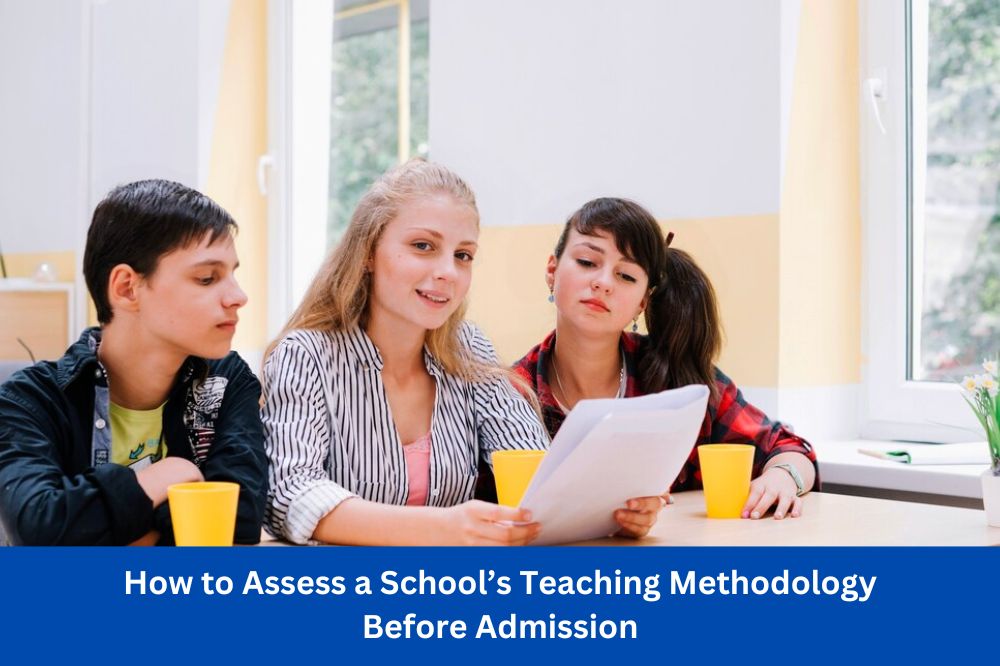Introduction:
Choosing the right educational institution for your child is a critical decision that significantly impacts their academic and personal growth. At Banyan Tree School Chandigarh, the Best Schools in Chandigarh where parents often focus on infrastructure, extracurricular activities, and faculty qualifications. However, an equally important aspect is the teaching methodology, which determines how effectively students grasp concepts, develop critical thinking, and acquire lifelong learning skills.
To make an informed decision, parents should thoroughly evaluate the instructional strategies employed by the school. Here’s a comprehensive guide to assessing teaching methodologies before admission:
1. Understanding the Curriculum Approach
A robust academic framework ensures that students receive a well-rounded education. Schools may follow different curricula such as CBSE, ICSE, IB, or Cambridge. Evaluating the curriculum structure will help you understand whether it aligns with your child’s learning needs.
- Does the curriculum integrate inquiry-based learning, problem-solving, and conceptual clarity?
- How is the balance maintained between theoretical knowledge and practical application?
- Is there a strong emphasis on project-based learning?
2. Pedagogical Strategies Used in Classrooms
Innovative teaching methods enhance student engagement and comprehension. While traditional rote learning still exists in some places, progressive institutions adopt modern strategies such as:
- Experiential Learning: Hands-on activities, field trips, and practical experiments.
- Flipped Classroom Model: Students learn concepts at home and apply them in class.
- Technology-Integrated Learning: Smartboards, virtual simulations, and AI-powered assessments.
- Collaborative Learning: Group discussions, peer teaching, and teamwork-driven projects.
- Gamification of Lessons: Making learning fun through interactive challenges and quizzes.
3. Teacher-Student Interaction and Engagement
A positive learning environment is fostered through healthy teacher-student relationships. While assessing an institution, consider:
- The student-teacher ratio for personalized attention.
- The approachability of faculty members and their responsiveness to queries.
- The frequency of doubt-clearing sessions and remedial classes.
- The use of differentiated instruction to cater to varied learning styles.
4. Assessing the Evaluation & Feedback System
Exams and assessments should measure not just memorization but also analytical skills, creativity, and conceptual understanding. Ask the following:
- Are there continuous assessment models (formative assessments) along with traditional exams?
- How is student progress tracked and communicated to parents?
- Is there a structured feedback system where students receive constructive inputs?
- How are students encouraged to self-assess and improve?
5. Integration of Skill-Based Learning
An ideal institution should prepare students for the future by integrating skill-based learning into the curriculum. Check for:
- Coding, robotics, and AI training from early grades.
- Language development programs and communication skills enhancement.
- Leadership, teamwork, and entrepreneurship initiatives.
- Career counseling and industry exposure sessions.
6. Extracurricular Activities and Holistic Development
A well-balanced education includes co-curricular programs that nurture creativity, physical fitness, and emotional intelligence. Examine:
- Sports infrastructure and physical education programs.
- Opportunities in music, dance, drama, and arts.
- Clubs and societies for literature, STEM, environment, and social service.
- Participation in inter-school competitions and Olympiads.
7. Technology Adoption in Education
Leading institutions incorporate digital tools to enhance learning outcomes. Verify:
- Availability of smart classrooms and digital learning platforms.
- Use of AI-based learning systems for personalized education.
- Integration of virtual reality (VR) and augmented reality (AR) for immersive experiences.
- Online learning support and resources for students.
8. Parental Involvement & Communication Channels
A good school maintains transparency with parents and involves them in the learning journey. Look into:
- Open-door policies for parental feedback.
- Regular parent-teacher meetings and interactive sessions.
- Mobile apps and online portals for academic updates and communication.
- Workshops and orientation programs for parents.
9. Alumni Success Stories and Testimonials
A school’s impact is best reflected in its alumni. Reviewing the achievements of past students can give insights into the institution’s effectiveness in grooming young minds. Seek answers to:
- How do alumni rate the teaching methodology?
- What are the notable achievements of former students in academics and careers?
- Are there testimonials or case studies available for reference?
10. Faculty Expertise and Training Programs
Teachers shape a student’s learning experience. Check the following aspects related to faculty:
- Qualifications and experience of educators.
- Frequency of faculty training and development programs.
- Innovative teaching certifications and pedagogical expertise.
- Research contributions and professional affiliations of faculty members.
11. Safety, Well-being, and Student Support Systems
Academic success is directly linked to students’ mental and emotional well-being. Schools that prioritize well-being offer:
- Dedicated counselors and mentoring programs.
- Anti-bullying policies and student grievance redressal mechanisms.
- Health and safety measures within campus premises.
- Social-emotional learning (SEL) integration in daily activities.
12. Trial Classes and School Visits
Before finalizing admission, consider visiting the campus and attending trial classes. This allows you to:
- Observe teaching methodologies firsthand.
- Interact with faculty and understand their approach.
- Analyze the classroom environment and student engagement.
- Seek feedback from existing students and parents.
Conclusion
Selecting an educational institution involves more than just looking at rankings or facilities. At Banyan Tree School Chandigarh, the Top 10 Schools in Chandigarh where understanding the teaching methodologies, student engagement strategies, evaluation systems, and the overall academic philosophy ensures that your child receives a high-quality education tailored to their needs. By actively researching, visiting campuses, and interacting with stakeholders, parents can make well-informed decisions that positively shape their child’s future.

